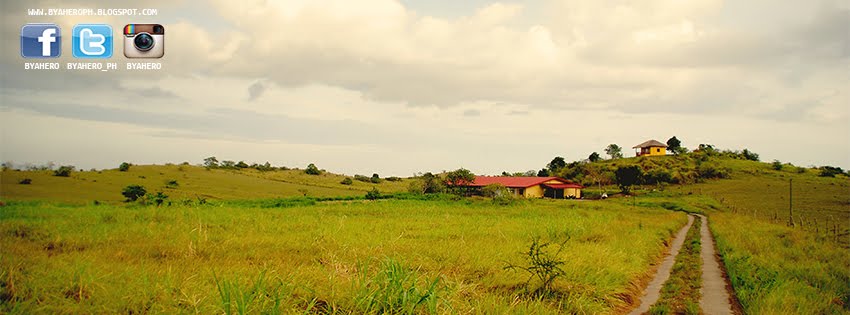Tuesday, July 6, 2010
Calapan City Plaza
Manila Cathedral Belfry
Discover the rich Historical Heritage of the Manila Cathedral
Manila Cathedral was first built in 1581 out of nipa and bamboo. But since it was vulnerable to typhoons and fires, it was later reconstructed into a stone building in 1592. However, two earthquakes struck Manila in the year 1600 destroying the structure, so the third structure was constructed in 1614 and expanded to have three naves and seven chapels.
However, earthquakes still repeatedly hit the cathedral in 1621, 1645, 1852, 1863, and 1880. The cathedral was reduced to rubble when the Japanese bombarded Manila in 1945. During the tenure of Manila Archbishop Rufino Jiao Cardinal Santos in 1958, the cathedral was reconstructed and Pope John Paul II elevated it to the rank of minor Basilica in 1981.
Apatot Beach, San Esteban, Ilocos Sur
Passi City Hall
The City of Passi is a 3rd class city in the province of Iloilo in the Philippines.Passi is a rice and sugar-rich area and the only component city and the largest in the Province of Iloilo in terms of land area, population and income.
According to popular legend, Spanish conquistadors stumbled on a small hut by the river’s bank where an old woman was fond winnowing pounded rice. One of them asked her, “¿Cómo se llama este lugar?” not knowing the native language of course. Much to the old woman’s surprise and perhaps excitement, she replied without much ado, “Ah, pasi,” which means some of the unhusked rice on her basket held in both hands. She must have thought that they were eager to know what was in the basket and what she was doing, because she could not understand their language. From that time on, the Spanish begun to call the place Pasi at first until it later evolved into Passi. Such legends about name origins are common throughout towns and cities in the Philippines, the core plot being a Spaniard asking the non-Spanish speaking natives what the name of the place is and the latter responding in what would end up eventually as the name of the place.
Oas Church
The Oas Church in Oas, Albay was founded by Franciscan Missionaries in 1605 with Fray Marcos de Lisboa as first curate. Bigger church and convent of volcanic rocks and bricks constructed under the direction of Fray Francisco de Anunciacion O. Peñaranda in 1825. Both damaged by fire in 1866 and reconstructed by Fray Francisco de Aragones the same year. Subsequent damages by earthquake and typhoon repaired by Fray Manuel de Brihueg in 1884. Transept of the church annexed by Fray Santos Herrejon, 1873-1878. Convent remodeled by Fray Carlos Cabido, 1889; totally destroyed by typhoon, 25 December 1947. Part of church roofing damaged by same typhoon; restored by M.R.P. Luis Dimadumba, 1948.
Subscribe to:
Comments (Atom)
Popular Posts
-
Pinangat Festival 2013 Schedule of Activities June 10 - 24 | Camalig, Albay ---- Source: Jan Edmund Dominic Bailon
-
Pinangat Festival 2012 Mutya ng Ika't Lahi Talent & Coronation Night Photos by Jayson Nodalo Related Links Mutya ng Camalig 2012 C...
-
OKB Gayon Bikol 2013 sa Daragang Magayon Festival April 1 - 6 The Oriental Hotel Lobby, Legazpi City
-
Featured Photos | Pinangat Festival "Biggest Pinangat" Contest Photos by Dante Magayanes
-
Festivals in Camarines Norte • Pinyasan Festival – Camarines Norte • Rahugan Festival - Basud • Palong Festival - Capalonga • Bant...
-
Let the Christmas Sale begin! Zest Air is offering Christmas Madness Seat Zale for as low as P112. Visit www.zestair.com.ph to book.
Popular Posts
-
Festivals in Camarines Norte • Pinyasan Festival – Camarines Norte • Rahugan Festival - Basud • Palong Festival - Capalonga • Bant...
-
CALENDAR OF FESTIVITIES JANUARY January 1 | NEW YEAR’S DAY (Holiday) January 1 | AGUMAN SANDUK | Minalin, Pampanga Januar...
-
The town of Tarlac has had a colorful and significant history. Its story may very well be story of Tarlac province itself, which came into b...
-
Pinangat Festival 2013 Schedule of Activities June 10 - 24 | Camalig, Albay ---- Source: Jan Edmund Dominic Bailon
-
GO NEGOSYO FESTIVAL 2013 October 4-6, 2013 Gaisano Grand Atrium, Koronadal City, South Cotabato 3rd Negosyo Festival Schedule...
-
Guling Guling Festival 2014 March 1 - 4 | Paoay, Ilocos Norte
-
Adlaw Sang Tigbauan October 20 - 25, 2013 Tigbauan, Iloilo
-
PHILIPPINE FESTIVALS AND EVENTS JANUARY 2016 January 1 | NEW YEAR’S DAY (Holiday) January 1 | AGUMAN SANDUK | Minalin, Pa...
-
If you're thinking of attending the Catandungan Festival 2013, you're in for a treat. Every year, people flock in the street...
Popular Posts
-
Festivals in Camarines Norte • Pinyasan Festival – Camarines Norte • Rahugan Festival - Basud • Palong Festival - Capalonga • Bant...
-
St. Luke's Medical Center is a tertiary referral hospital located in Bonifacio Global City, Taguig City. It is the most advanced ho...
-
CALENDAR OF FESTIVITIES JANUARY January 1 | NEW YEAR’S DAY (Holiday) January 1 | AGUMAN SANDUK | Minalin, Pampanga Januar...
-
Green Park Resort, Atimonan Quezon RESORTS & HOTELS IN ATIMONAN, QUEZON PROVINCE De Gracia Beach Resort Brgy. Balubad 0923‐7...
-
PHILIPPINE FESTIVALS AND EVENTS JANUARY 2016 January 1 | NEW YEAR’S DAY (Holiday) January 1 | AGUMAN SANDUK | Minalin, Pa...
-
OAK PARK HOTEL & RESIDENCES Padillo Building, Enriquez cor. Hermana Fausta Sts., 4301 Lucena City Phone: (042) 373-6764 or 710-6148 DIAM...
-
The Oriental Legazpi Hotels THE ORIENTAL LEGAZPI (First Class) Sto. Nino Village, Taysan, Legazpi City Tel: (+632) 470 9737 | 404 7501 |...














.jpg)



.jpg)

.jpg)


